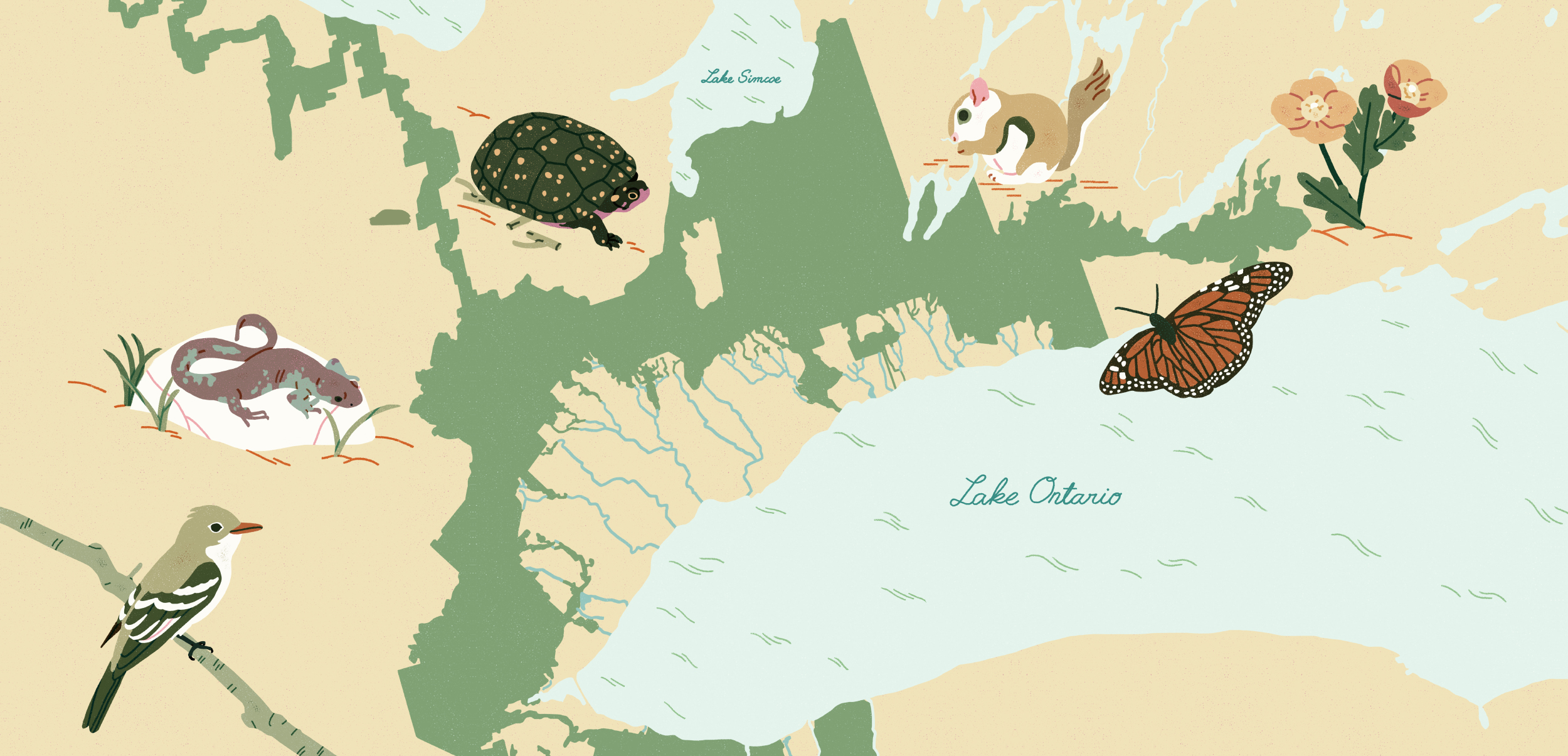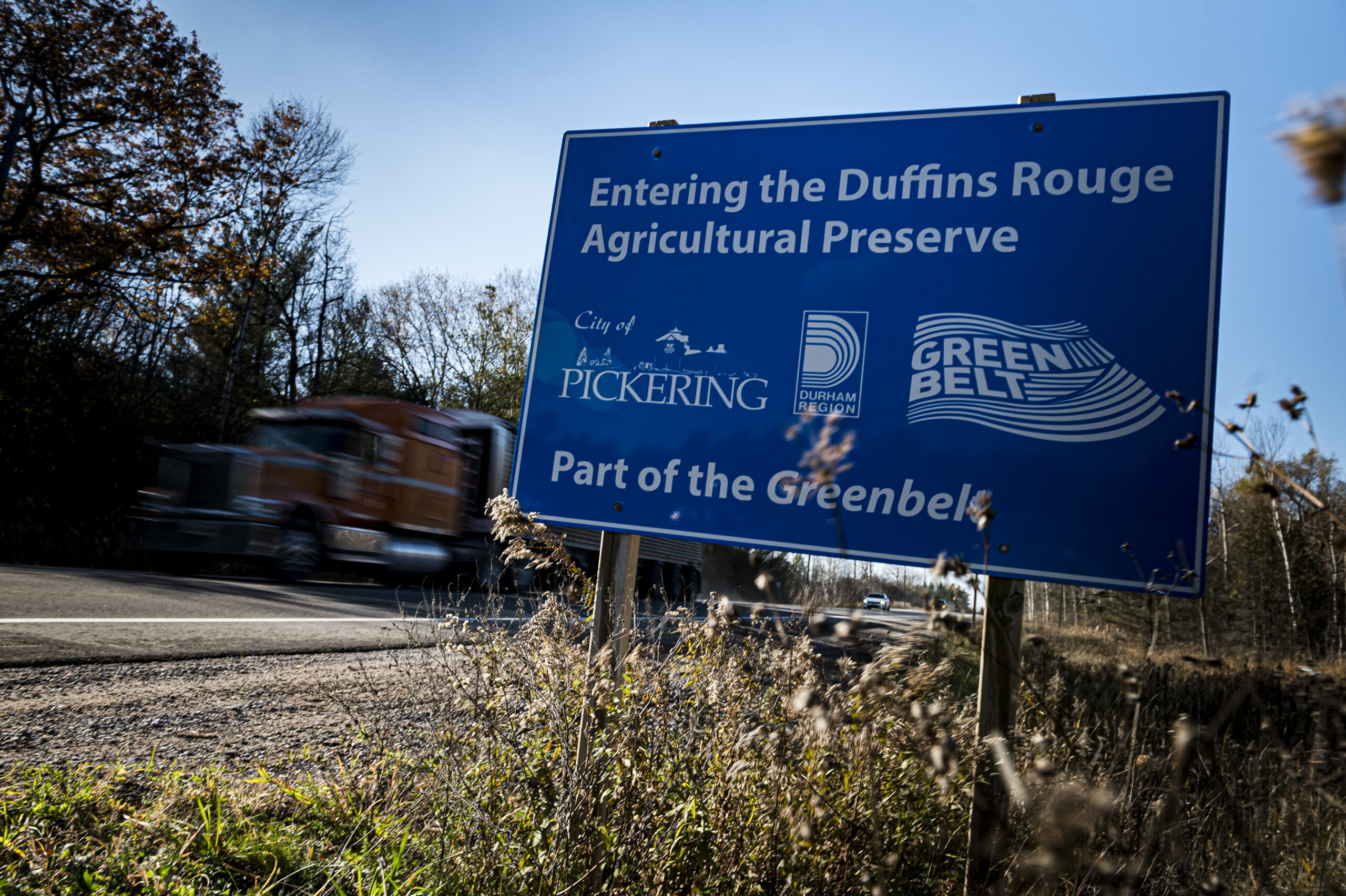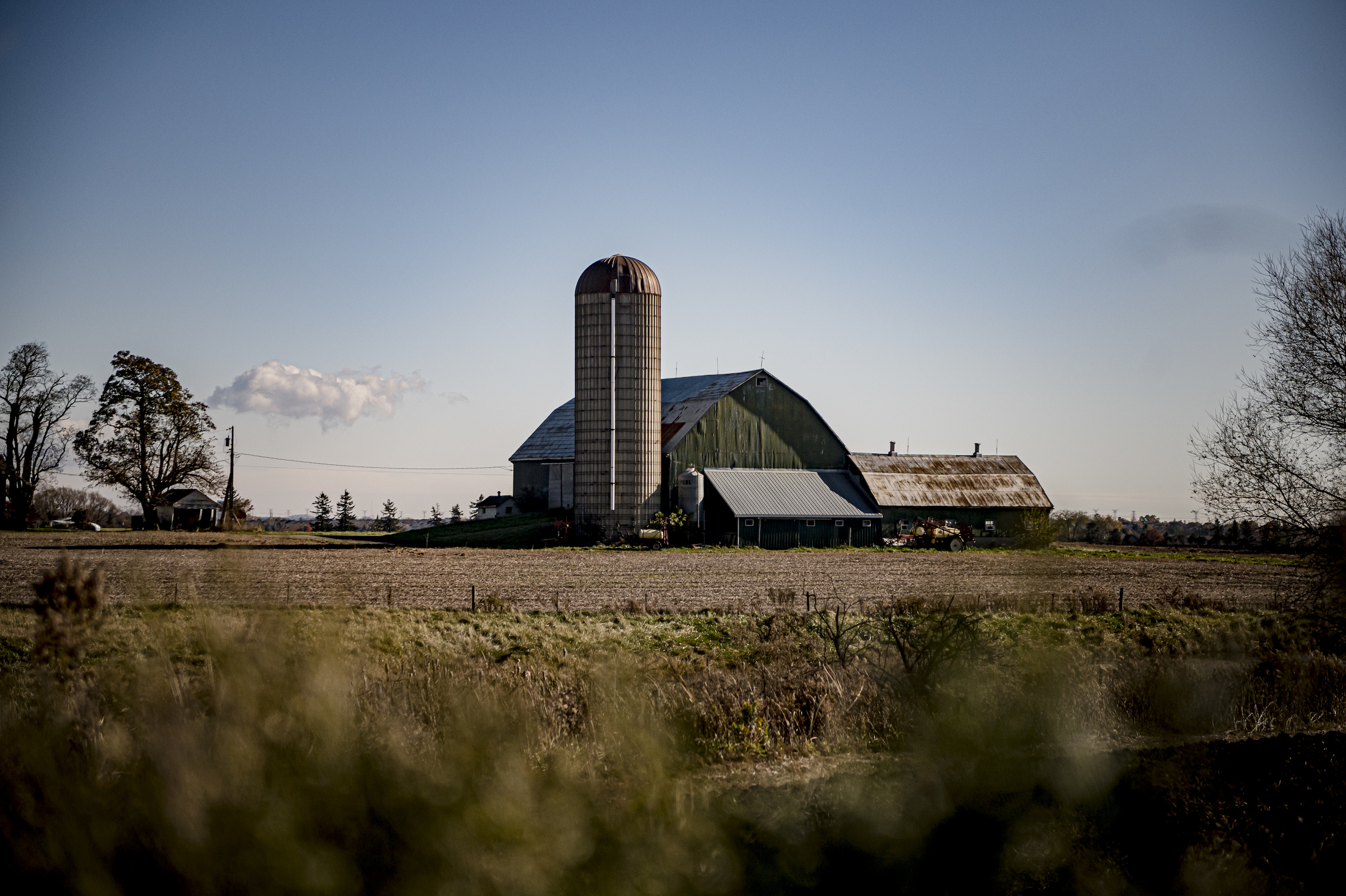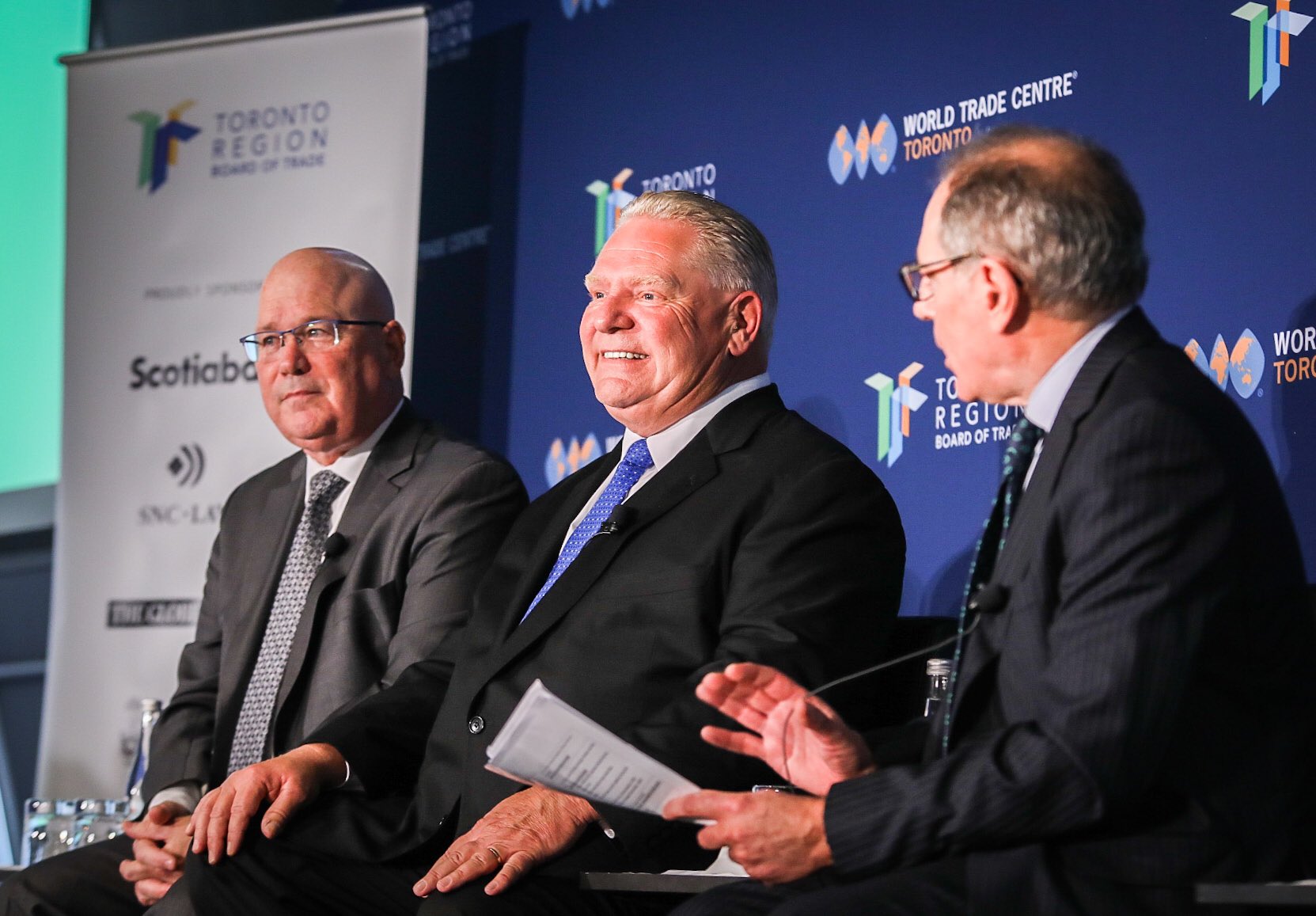
‘Afraid of the water’? Life in a city that dumps billions of litres of raw sewage into lakes and rivers
10 billion litres of sewage are dumped into Winnipeg’s lakes and rivers each year. Some...
Federal Environment Minister Steven Guilbeault says he doesn’t believe the Ontario government’s claims about the need to build homes in the Greenbelt, and could intervene to stop development there.
Prompted by questions from The Narwhal Thursday, Guilbeault said he couldn’t give specifics yet because it isn’t clear which projects developers might propose, or where they might be. But he said Ontario’s push to develop Greenbelt land “flies in the face of everything we’re trying to do in terms of being better prepared for the impacts of climate change,” and Ottawa “will be looking at the potential use of federal tools to stop some of these projects.”
“I’m very worried about what’s happening with the Greenbelt,” Guilbeault said.
“I think we’re being told that in order to provide housing to Canadians, we need to destroy nature. I profoundly reject that premise. I think this is a way of thinking from 50 or 60 years ago.”
The Ontario government finalized plans last month to open up 7,400 acres of protected Greenbelt land for development in what it said was a bid to build 50,000 homes, even though a provincial task force has said the housing affordability crisis can be fixed without taking land from the Greenbelt.
Speaking to reporters Friday morning, Ontario Premier Doug Ford said he’s “really disappointed” by Guilbeault’s comments, and believes the issue is provincial jurisdiction.
“We’re building homes on those pieces of property, sure as I’m standing here today,” Ford said.
In a statement after this story was published, the office of Ontario Municipal Affairs and Housing Minister Steve Clark, whose portfolio includes the Greenbelt, said the opening of the Greenbelt was necessary “when taking into account the new immigration targets set out by the federal government.”
The province will also require any environmentally-sensitive areas of former Greenbelt land to be “set aside and protected before any construction begins,” and developments will include public infrastructure like hospitals and long-term care homes, the statement said.
A large chunk of the acreage removed from the Greenbelt came from the Duffins Rouge Agricultural Preserve east of Toronto, which is directly adjacent to Rouge Urban National Park. In December, Parks Canada warned Ontario that development on the agricultural preserve would violate an agreement between the two levels of government and likely cause “irreversible harm” to the park’s wildlife and ecosystems.

“This is one of the most popular national parks in Canada,” Guilbeault said Thursday, referring to Rouge Urban National Park. “Projects that could impact the environmental integrity [of the park], we will look at very closely.”
Though it will likely be some time until developers firm up plans for construction on former Greenbelt land, one possible tool Guilbeault mentioned is species at risk legislation, which he can use to issue emergency orders to stop developments that would harm federally-protected species. Guilbeault did just that in Nov. 2021 when he halted work on a residential development in Longueuil, a Montreal suburb, due to threats to the habitat of the western chorus frog.
“You can imagine that if similar projects were to be proposed on lands that were part of the Greenbelt, then I have a legislative obligation to intervene,” Guilbeault said.
Another potential avenue, Guilbeault said, is the federal Impact Assessment Act, which the Justin Trudeau Liberals have already used to intervene on Highway 413, a controversial highway project planned to cut through the Greenbelt. The act doesn’t allow Guilbeault to unilaterally step in and halt a development — instead, citizens would need to make a request about a specific project, the Impact Assessment Agency would do an initial review and Guilbeault would decide if the federal government should give it another layer of oversight.
Some projects that are subjected to federal impact assessments are approved in the end, and some aren’t. But at a minimum, the process is almost guaranteed to cause enormous delays. Highway 413, for example, has essentially been frozen since the federal government decided to subject it to a review in 2021.
Guilbeault made the comments at a press conference Thursday in Toronto, where he announced $8 million in funding for three nature conservation projects in Ontario. One would turn a hydro corridor into a trail network connecting downtown Toronto with Rouge Urban National Park, a project led by the Toronto and Region Conservation Authority.


Guilbeault also called it “terrible” that the province moved last fall to disempower conservation authorities, which oversee key watersheds, as part of Bill 23.
“I’m really saddened and shocked by what the Ontario government is doing to [the Toronto and Region Conservation Authority] and the people who invested years and years and years of efforts, time and money to advance conservation,” he said. “They can continue to be an incredible partner and we will continue to work to work with them.”
The federal environment minister’s warning about the Greenbelt comes as the Doug Ford government is facing increasing scrutiny within Ontario over its decision to open Greenbelt land for development.
In November, a joint investigation by The Narwhal and the Toronto Star found six developers bought up Greenbelt land since 2018, when Ford was first elected. One piece of Greenbelt land was bought just weeks before the government announced plans to open it for development. The reporting raised questions about whether some developers may have had advance knowledge of the changes — both Premier Doug Ford and Clark have denied giving industry a heads-up.
Other developers who own portions of long-protected Greenbelt land have held it for many years, and stand to make immense profits. The Narwhal/Star investigation found that nine of the developers who stand to benefit most from the Greenbelt land swap appear to have donated significant sums to the Ontario Progressive Conservatives. Five are also connected to the Progressive Conservatives through former Tory officials and politicians now working as registered lobbyists.

In the wake of the investigation, Ontario’s integrity commissioner and auditor general decided to launch individual probes into the province’s decision-making on the Greenbelt. The Ontario Provincial Police’s anti-rackets branch has also begun quietly conducting interviews to decide whether it will launch an investigation as well.
On Friday, Ford said the police hadn’t been in touch with his office.
“Let me make it very clear,” Ford said. “There’s nothing going on there, outside of building homes.”
In exchange for the Greenbelt land being developed, the government added another 9,400 acres from elsewhere to the protected area, which it has argued is a net benefit.
But those 9,400 acres, coming from a series of urban river valleys and an area northwest of Toronto called the Paris Galt Moraine, were already protected under other mechanisms.
Ford also pointed Friday to 2017 changes to the Greenbelt by the previous Liberal government, which amounted to 370 acres. Ford said there’s a “double standard.”
“I find it ironic,” Ford said. “I never hear anyone talk about the Liberals that changed the Greenbelt 17 times.”
Updated on Jan. 26 at 4 p.m. ET: This story was updated to remove a partial quote from the subheadline.
Updated on Jan. 27 at 1:30 p.m. ET: This story was updated to include statements from the government.
Get the inside scoop on The Narwhal’s environment and climate reporting by signing up for our free newsletter. On a warm September evening nearly 15...
Continue reading
10 billion litres of sewage are dumped into Winnipeg’s lakes and rivers each year. Some...

Court sides with Xatśūll First Nation, temporarily halting Mount Polley mine waste expansion

Break out the champagne: Emma’s storied life and leadership in journalism has earned her the...
